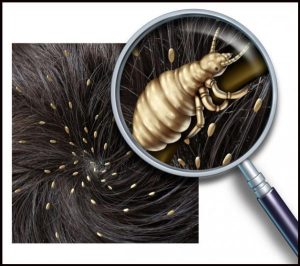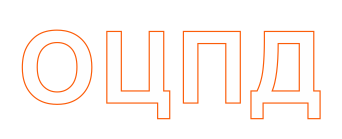Педикулез
 Педикулез. Общие сведения
Педикулез. Общие сведения
Педикулез или вшивость (от слова Pediculus – вошь) – это специфическое паразитирование на человеке вшей, питающихся его кровью. Всего известно свыше 500 видов вшей, каждый из которых паразитирует на каком-нибудь одном виде млекопитающих и на другого не переходит. Выделяют три вида вшей, паразитирующих на человеке: головная, платяная и лобковая. Соответственно и педикулез подразделяется на головной, платяной, лобковый и смешанный (несколько видов).
Эпидемиологическое значение педикулеза в том, что вши передают ряд инфекционных заболеваний. Наиболее опасны такие как сыпной и возвратный тиф. Кроме того, педикулез сопровождается выраженным зудом, нарушением сна, в ряде случаев присоединением вторичной инфекции в области расчесов (дерматит, колтун), а также стрессом. Психологические последствия заболевания, особенно сильно проявляющиеся у детей, имеют немаловажное значение.
По мнению Всемирной Организации Здравоохранения педикулез сейчас – самое распространенное паразитарное заболевание в мире. Ухудшение материального и санитарно-гигиенического положения людей способствует распространению вшей, однако, педикулез широко распространен как в развивающихся, так и в экономически развитых странах. Стереотип, что педикулез – это участь людей без определенного места жительства ошибочен, среди обычного населения болезнь также часто встречается. Ни один образованный и чистоплотный человек не может быть застрахован от заражения педикулезом, прежде всего головным. Пренебрежение гигиеной тут ни при чём — вши из всех голов скорее выберут ту, которую часто моют, где кожа чистая и её легче прокусить.
Бытует мнение, что педикулезом можно заболеть внезапно, например, от пережитого стресса. Это не так! Всегда имеет место факт заражения. Хотя непрямая связь между этими явлениями присутствует: при стрессе истощаются защитные силы организма, кроме того существуют сведения о том, что стресс «имеет запах», а вши хорошо распознают запахи.
Вши выживают в воде, они хорошо ползают (в минуту вошь проползает 30-35 см по земле и до 1 м по вертикальной поверхности), однако не умеют прыгать и летать. Поэтому заражение происходит только при тесном контакте (соприкосновение волос) с уже зараженными людьми (прямая передача), а также при обмене шапками, шарфами, бельем и т.д. (непрямая передача) благодаря наличию коготков на лапках вшей и хорошо развитому рефлексу цепляния. Это важное биологическое приспособление позволяет удерживаться на волосах, одежде и при соприкосновении с другим хозяином, удерживаться на нем.
Проблема педикулеза может коснуться любого из нас или наших знакомых и говорить о ней нужно без стеснения.
Платяной педикулез: признаки, санация и профилактика
Вызывается платяными вшами, самыми опасными в эпидемиологическом отношении, так как являются переносчиками возбудителей сыпного и возвратного тифа. Платяная вошь самая крупная, с длиной тела до 5 мм у самок, питается 2-3 раза в сутки, насыщается за 3-10 минут. Ежедневно откладывает около 10 яиц, продолжительность жизни в среднем 1,5 месяца. Платяная вошь предпочитает более теплые места, света не любит и поэтому живёт в складках белья и платья, особенно в швах. При большой численности вши могут встречаться на поверхности одежды, постели, мебели и даже на полу. При пониженной температуре, без человека могут прожить (голодать) до 2-х недель. В периодически снимаемой и надеваемой одежде процесс развития вшей может затянуться до 6 недель, тогда как в не снимаемом белье – 7-10 дней.
Справка: Возбудитель сыпного тифа – риккетсия Провачека – внутриклеточный паразит. Он переходит от больного человека с кровью в организм вши, накапливается в клетках ее кишечника, затем разрывает их и вновь выходит в кишечник. Когда вошь сосет кровь, ее кишечник наполняется и одновременно происходит удаление его прежнего содержимого – так риккетсии попадают на поверхность кожи человека. Чувствуя зуд, человек расчесывает место укуса вши, и возбудитель заболевания попадает через ссадину в организм. В крови риккетсии выделяют токсины, губящие клетки эндотелия сосудов. В результате замедляется ток крови, образуются тромбы, происходит закупорка сосудов, нарушается микроциркуляция крови. Ранее, когда не знали антибиотиков, тиф нередко заканчивался смертью.
Признаки заражения – зуд и множественные расчесы на коже туловища: чаще на животе, лопатках, пояснице, бедрах, затылке.
Очень значимый в плане платяного педикулеза контингент — социально-дезадаптированные граждане без определенного места жительства (БОМЖ) и другие категории граждан, образ и условия жизни которых делают их постоянными носителями этого вида педикулеза.
Санация: При платяном педикулёзе необходима полная санитарная обработка, включающая помывку поражённых платяным педикулёзом людей и камерную дезинфекцию их личных вещей и постельных принадлежностей в условиях центра профилактической дезинфекции или в организации здравоохранения.
Головной педикулёз: признаки, санация и профилактика
Вызывается головными вшами. Головная вошь – небольшое насекомое до 3 мм в длину (самки). Живёт и размножается в волосистой части головы, предпочтительно на висках, затылке и темени. Питается кровью каждые 2-3 часа, прокалывая кожу головы своим хоботком. В месте проколов остаются серовато-голубые следы, которые затем начинают «зудеть» из-за фермента, который впрыскивает в ранки вошь. Этот фермент необходим насекомому, чтобы не дать крови свернуться, и вызывает местное раздражение. В день самка откладывает около 7 яиц. Саму вошь можно не увидеть — она очень подвижна. Но гниды можно обнаружить легко. Гниды – небольшие прозрачные «бусинки», яйца вши. Они плотно прикреплены к волосам ближе к корню. Сами гниды не несут особого вреда, кроме того, что позже из них появятся новые насекомые. Голод вошь переносит плохо, без человека может прожить 1-2 суток. Продолжительность жизни в среднем 1 месяц. Цикл развития 5-9 дней. Головной педикулез широко распространяется в детских коллективах. Наиболее значимый контингент населения – это организованные дети в возрасте 7-14 лет. В этом периоде дети социально активны, дружат, посещают различные кружки и секции, играют в тесном контакте. Кроме того, они выходят из-под постоянного надзора со стороны родителей в отношении правил личной гигиены и при этом еще не имеют достаточного опыта, и настойчивости в самостоятельном соблюдении этих правил.
Признаки заражения: постоянный зуд и расчёсывание волосистой части головы, ребёнок «чухает» голову. На коже затылка появляются характерные красноватые пятна.
Санация: При головном педикулёзе необходима частичная санитарная обработка, включающая в себя обработку волосистой части головы специальными препаратами (педикулицидами), которые свободно приобретаются в аптечной сети, смену постельного белья с последующей стиркой и проглаживанием и смену головного убора ребенку. Обработку можно провести своими силами в домашних условиях.
Лобковый педикулёз: признаки, санация и профилактика
Вызывается лобковыми вшами. Лобковая вошь или плошица (плоское тело, как щит) – самая мелкая вошь, длина тела до 1,5 мм. Живёт и размножается на коротких волосках лобка, бровей и ресниц. Кровососание почти непрерывное. Плодовитость невысокая, в день откладывает около 1-2 яиц (гнид), в среднем живёт около месяца. Без человека может прожить (голодать) не более 10 – 12 часов. Заразиться могут как взрослые, так и дети первых лет жизни через постель родителей. При значительной численности насекомые могут распространяться на всей нижней части туловища, особенно на животе, иногда в складках шеи, а у детей первых лет жизни на ресничках и бровях.
Санация: При лобковом педикулёзе проводится частичная санитарная обработка. Но сначала необходимо обратиться к специалисту в кожвендиспансер для уточнения диагноза и получения рекомендаций по её проведению своими силами в домашних условиях.
